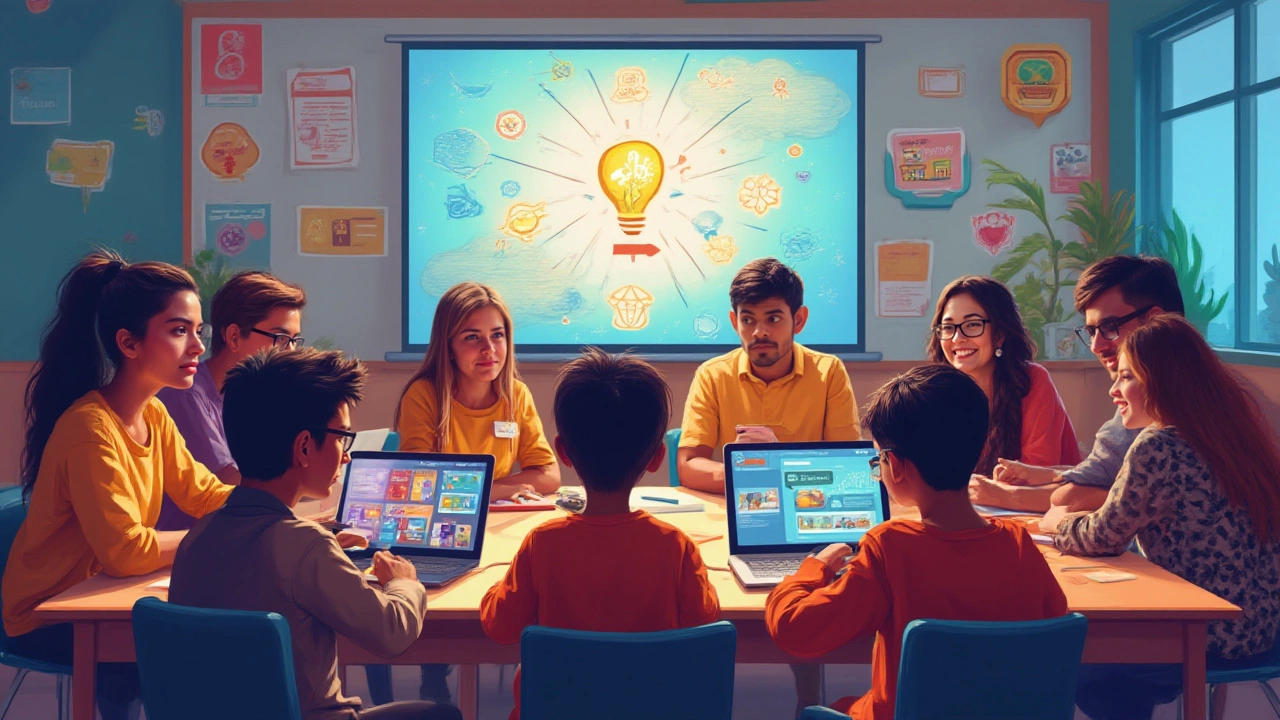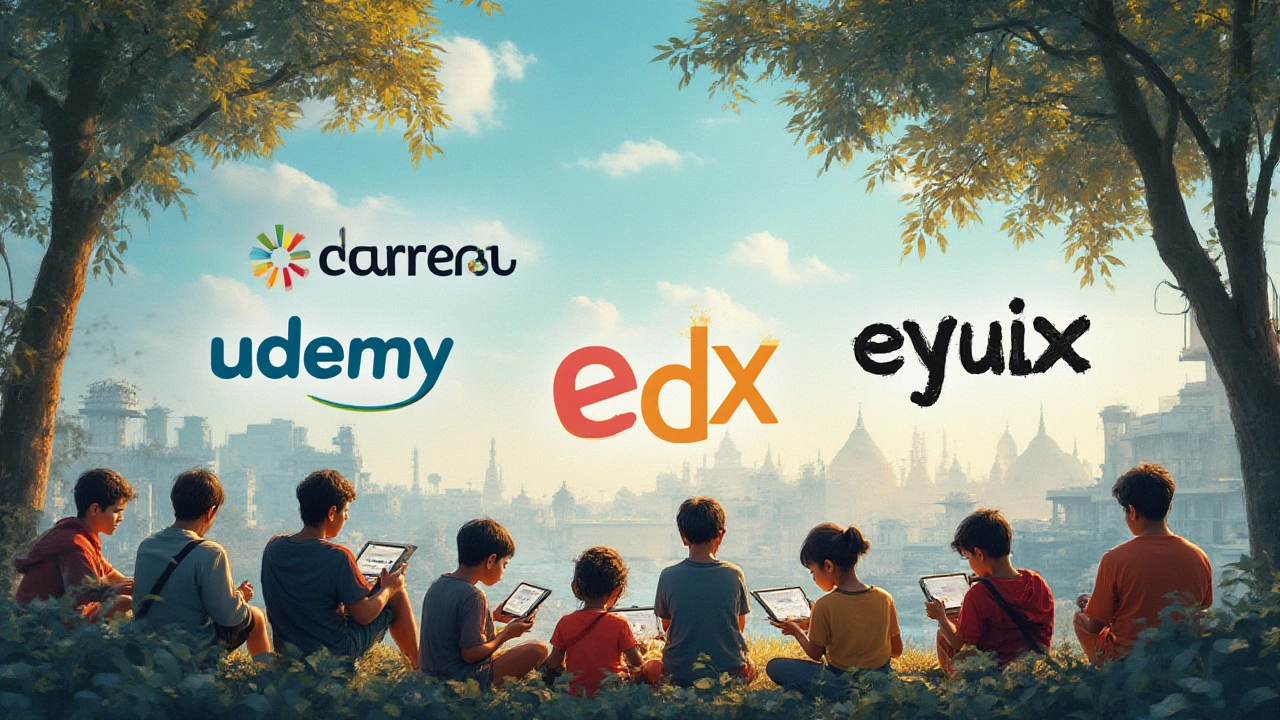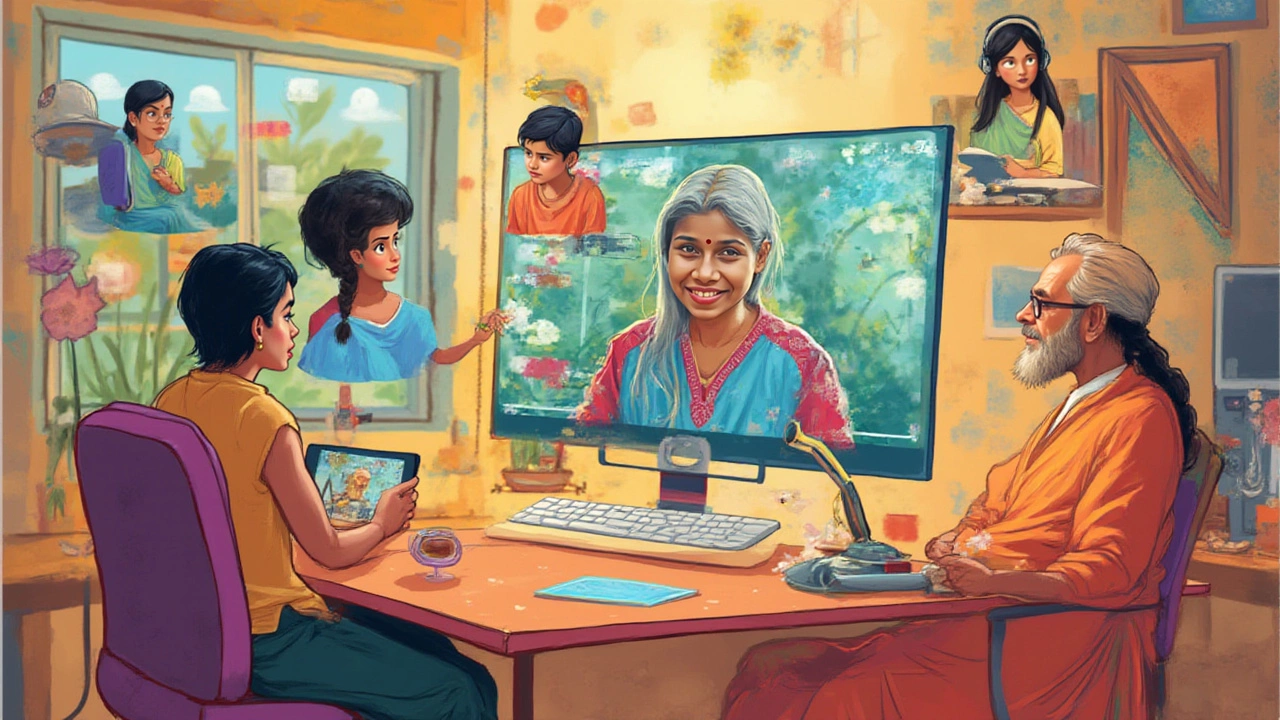
Try to picture this: someone in India is building a new skill for a job in Germany, while a mom in Texas conquers calculus from her kitchen. What ties them together? Their answer probably starts the same—a few taps on a screen, and suddenly, a world of courses appears. The largest learning platforms are redefining how people pick up new skills, get certifications, or chase down entirely new career paths.
Just a decade ago, getting access to top university courses probably meant expensive tuition and sometimes moving to a new country. Fast forward to now, and millions are logging into platforms where many classes cost far less than a night out—or are even free. These platforms are everywhere. They've become household names and, for some learners, just as essential as Netflix or Gmail.
The Evolution and Expansion of Online Learning Platforms
The story of modern online learning platforms isn’t just about replacing dusty textbooks. It’s about giving people control—when to learn, where to learn, and how fast they want to move. Back in the early 2000s, not many folks predicted that a startup called Coursera, launched in 2012, would have raked in roughly 124 million registered users by 2025. Udemy, another giant, claims over 75 million users and over 210,000 courses.
But numbers only tell part of the story. The biggest learning platform in the world? That’s a tougher question to answer than you’d think because it depends on what you’re measuring. Are we talking registered users, enrolled students, amount of content, or impact? If you look at sheer reach, Coursera often takes the top spot for broad academic offerings. But you have Khan Academy, which focuses heavily on core K-12 subjects and reaches over 18 million users monthly, especially powerful for students and teachers looking for support with schoolwork.
EdX is another heavy hitter, now powered by 2U, boasting course partnerships with Harvard, MIT, and over 160 other big-name institutions. By 2025, EdX serves over 44 million learners. While platforms like Udacity focus on tech and career-changing “nanodegrees,” Skillshare leans toward creatives—think video editing, graphic design, and writing.
By 2023, the MOOC (Massive Open Online Course) industry had crossed 200 million learners globally. What's wild is how these platforms started—even as experiments, they sparked entirely new models of education. The old gatekeeper model—where prestige universities held all the cards—is now challenged by anyone with Wi-Fi and curiosity.
These platforms don’t just give you videos. They have interactive exercises, auto-graded labs, peer projects, career coaching, and even live events. They've pushed universities to rethink how they serve students. Some colleges now blend MOOC courses into their regular programs or even offer full degrees through Coursera and edX. You can literally earn a master’s from the University of Illinois or Georgia Tech without setting foot on campus.
Take a look at this table for a quick snapshot of the giants as of July 2025:
| Platform | Registered Learners | Number of Courses | Founded |
|---|---|---|---|
| Coursera | 124 million+ | 7,000+ | 2012 |
| Udemy | 75 million+ | 210,000+ | 2010 |
| edX | 44 million+ | 4,200+ | 2012 |
| Khan Academy | 18 million/month | ~40,000 videos | 2008 |
| Skillshare | 12 million+ | 35,000+ | 2010 |
| Udacity | 16 million+ | 2,000+ | 2011 |
The range of subjects is staggering: Python programming, photography, data science, business basics, mindfulness, even how to make the perfect cup of coffee. These aren't just boring lectures—the best courses throw in quizzes, coding sandboxes, and discussion boards that feel livelier than some real classrooms. Some even bring in Nobel laureates or Apple designers as guest instructors.

What Makes a Learning Platform 'Biggest'? More Than Just Numbers
People like to ask, "Which one is the biggest?" But here's the catch: biggest for whom? For global reach, Coursera probably leads, but Udemy wins when it comes to raw numbers of courses and instructors (many of whom are everyday people, not professors). Khan Academy’s open-access model has won fans at schools and homes where every dollar counts. And let’s not forget LinkedIn Learning, which exploits its job network to offer over 21,000 business and tech courses—some employers even pay for staff to use it as part of their upskilling strategy.
If you’re looking for an academic degree, Coursera and edX are miles ahead. They partner with universities to offer widely accepted credentials. Udemy, meanwhile, thrives on “hot topics”—think marketing, coding, productivity—often updated faster than other sites because instructors don’t have to chase institutional approvals.
So, what tips make picking the “biggest” learning platform for your needs easier?
- Check the content quality: Not all courses are created equal. A shiny platform with tons of options doesn't help much if the videos are dull or out of date. Read reviews, scan preview lessons, and see how recent the materials are.
- Look for strong credentials: If you need something official—maybe a certificate for your CV—make sure the platform’s credentials are recognized in your field. Coursera and edX tend to score high here since they're tied to brick-and-mortar schools.
- Consider learning style: Video lectures are great, but what about hands-on work? Udacity’s tech nanodegrees stand out for projects with real code, while Skillshare is beloved for its project-based “create as you go” vibe. Some people learn best by talking with others; discussion boards can make or break the experience.
- Pay attention to price: Free courses can be awesome, especially on platforms like Khan Academy and some Coursera classes. But the best stuff, especially full specializations, might cost anywhere from $30 to several thousand dollars for a degree. Many offer monthly subs or pay-per-course models so you can binge as much as you want for a flat fee.
- Watch for community and support: The biggest platforms often have better support and lively online forums, but sometimes smaller sites have tighter, more engaged groups. If you need feedback or mentoring, dig into the community side.
Here’s another wild stat: About 60% of Coursera users say they've gained career benefits from completing a course, and roughly 18% report getting a new job or promotion because of what they learned. If that sounds like marketing, try reading personal stories—lots of folks share how learning online helped them build businesses or break into new fields.
Of course, all this growth hasn’t fixed every problem. There are legit challenges: not everyone has fast internet, and there’s a digital divide where more rural or low-income students can get left behind. Another tricky bit is motivation. Online classes are easy to start, but only a small chunk of learners ever finish. Platforms know this and are constantly experimenting—adding push notifications, gamification, and “learning streaks” to keep you hooked.
Language is another factor. The biggest learning platforms have started translating content into dozens of languages. For example, Coursera and Khan Academy now offer much of their catalogs in Spanish, French, Hindi, and more. That’s partly why they rack up so many users in Asia and Latin America.
Hybrid models are coming up fast, too—some companies blend online courses with live webinars, local meetups, or even virtual reality labs so you can practice real-world skills. Imagine tinkering with a simulated robot or “traveling” through medieval Europe, all without leaving your chair.

Impact, Trends, and The Future: What to Expect
What’s clear is that online learning isn’t something extra anymore—it’s a daily tool. Businesses run onboarding through these platforms. Schools supplement lessons with Khan Academy or Coursera. Even grandparents use them to tackle everything from guitar to genealogy.
Platforms now offer wide support for assistive tech—screen readers, closed captions, and translation—helping make content friendlier to everyone, including folks with disabilities. That push for accessibility is helping even more learners join the digital classroom.
If you’re thinking about where this is all heading, keep an eye on AI. Major platforms now deploy AI tutors that can answer questions in real time or suggest what to study next. Udemy, Coursera, and Khan Academy have all rolled out personalized study plans and chatbots. These systems spot your weak points, point you to relevant exercises, and keep your progress on track.
The other massive trend: micro-credentials and short courses. Instead of dropping four years (and six figures) on a university degree, more people stack “badges” from these platforms—each focused on specific skills, from coding in JavaScript to mastering Excel. Microsoft, Google, and Facebook partner with Coursera and edX to launch tech “certificates” that have become new gold standards for entry-level jobs. Google’s IT Support Professional Certificate, for instance, had more than 500,000 enrollments by late 2024, and many graduates say it fast-tracked their way into tech roles.
With companies worried about keeping skills fresh, LinkedIn Learning and Udemy Business let HR teams build tailor-made training programs for their staff. Even as degrees still matter, rapidly changing tech has pushed the value of “just in time” learning and fast upskilling.
Let’s talk reach for a second. Coursera offered free access to colleges in Ukraine in 2022 during wartime, just as it does for refugees or displaced workers in crises. Platforms like Khan Academy provide pandemic learning loss tools for teachers across the globe. The big players aren’t purely profit-driven; many have strong nonprofit arms or partner with governments to bridge educational gaps.
Still, is there a real winner as the “biggest learning platform?” It depends what you want—a recognized certificate, technical skills, creative inspiration, or just support with middle school homework. For size, Coursera and Udemy are the headline acts. For impact, especially in classrooms or developing countries, Khan Academy’s free model keeps it at the front of a different kind of race.
If you're new to these giants, the good news is that almost every one of them lets you try before you buy. Pop in, take a sample lesson, and see if the teaching style suits you. In a world where skills move faster than ever, these platforms aren’t just backups—they’re where millions are building their futures. Whether you want to change jobs, impress your boss, or just outsmart your neighbor at trivia night, there’s a course for that.
More Articles

Is CBSE Accepted in the USA?
Curious if the CBSE curriculum holds weight in the USA? Dive into how American universities view CBSE credentials, the application process for aspiring CBSE students, and tips for smooth transitions. Whether you're aiming for college or considering moving, understanding these points will make your path clearer.

Best Education Boards for Kids: CBSE vs ICSE vs State Boards vs IB
Stuck between CBSE, ICSE, State Boards, or IB for your child? This article breaks down facts, pros and cons, and real tips so you can pick what truly suits your kid's future.

MBBS Doctor Salaries in India: Insights and Influences
Exploring the salary prospects for an MBBS doctor in India offers a unique glimpse into the varied and evolving medical landscape. The financial outcome for doctors varies significantly depending on experience, specialization, and location. With the rise of NEET coaching and medical training avenues, young aspirants often wonder about the financial rewards and challenges of pursuing this noble profession. Understanding what factors influence a doctor's earnings can help guide potential medical professionals in shaping their career paths.
